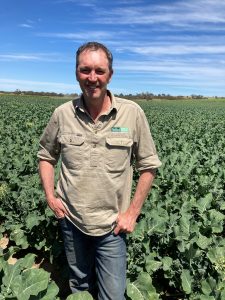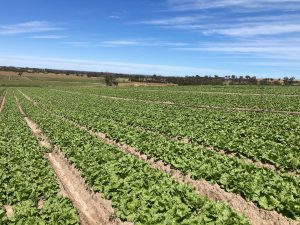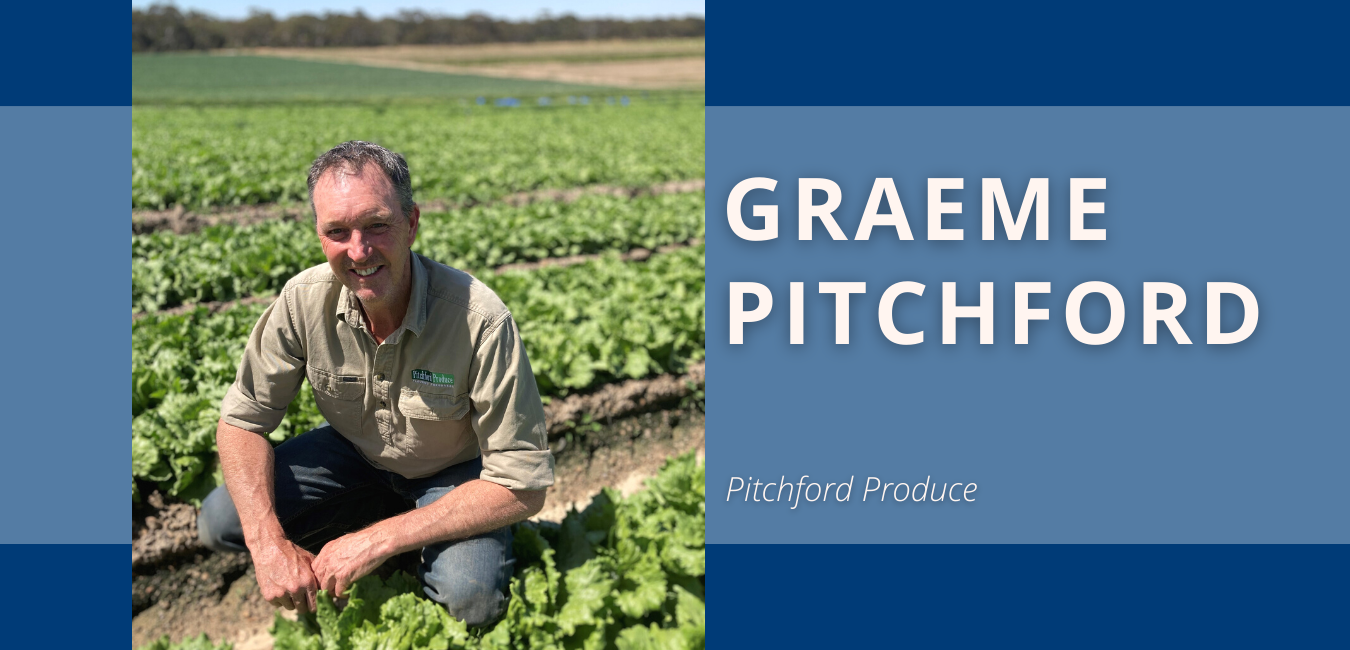Championing sustainable environmental practices
South Australian vegetable grower Graeme Pitchford has been a long-serving member of the EnviroVeg program’s Steering Committee. In this column, AUSVEG’s Danielle Park speaks with Graeme about his involvement with EnviroVeg, and the importance of environmentally sustainable practices in 2021.
A strong advocate for sustainable vegetable production in South Australia, Graeme Pitchford is continuing to investigate innovative practices to improve his vegetable growing operation.
Graeme’s business, Pitchford Produce, is located near Currency Creek on the Fleurieu Peninsula, south of Adelaide. Crops grown include baby cos, iceberg lettuce and broccolini, with a few additional lettuce lines included.
It all starts with the soil
Soil is a strong focus for Graeme and Pitchford Produce, with most of the property consisting of sandy loam over clay.
“Managing the soil is important. The aim is to look after the soil the best we can,” Graeme says.

Cover cropping through the cooler months of winter is an important part of managing the soil. Different cover crop types have been used at Pitchford Produce.
To control broadleaf weeds, a cereal cover crop option has been a more recent choice. Graeme is very interested in continuing to investigate a wider range of cover crops, including options that might allow nitrogen fixation while not providing a host for club root.
“We are always trying to work out the best scenarios, looking after the microbes in the soil using crop rotation and adding organic matter back in through compost,” Graeme explains.
Graeme is also interested in incorporating biofumigant cover crops to maintain and build a healthy soil biology without using fumigation. Better quality produce is also a sought-after benefit.
Preventative measures
When it comes to managing pests and diseases, Graeme is a strong advocate for Integrated Pest Management (IPM). However, he is aware that it can be difficult to get the balance right all the time.
“It is challenging. You can do your very best at times – you keep monitoring and find a bug or two. You can still get caught out,” Graeme says.
“We’re trying to be the best we can, but preventative measures are needed sometimes.”
Overall, Graeme is keen to continue to improve his IPM practices.
“I like the thought process. I like the idea of only when necessary and targeting specific insects at specific times,” he says.
When it comes to disease management, the issue of white blister on brassica crops has created a new challenge for Graeme over recent years. As with any new disease or pest, there is a need to learn and apply different methods of management or control.
The use of drip irrigation to keep the leaf dry and allow for efficient application of irrigation water has been the option chosen to best manage both the disease risk, and to reduce the loss of water and nutrients when fertigating.
Raising awareness
One area that the EnviroVeg Program has highlighted for Graeme is the potential risk posed with his current level of preparation for any on-farm biosecurity challenges.
The EnviroVeg biosecurity section highlights the benefit of on-farm biosecurity signage, procedures to prevent pests and diseases from entering and travelling across a property as well as monitoring and recording unknown pests and diseases, among other practices.
However, the topic of on-farm biosecurity had not been included in earlier versions of the EnviroVeg program. Therefore, when Graeme completed the online EnviroVeg self-assessment for Pitchford Produce, several new areas to improve were highlighted for the business.
He admits that biosecurity wasn’t something the business had focused on beforehand.
“It has made me think about who is coming on-farm. We take part in a local program that includes school visits and have re-sellers visiting the site too,” Graeme says.
“On-farm biosecurity is something to keep on the forefront of our minds now.”
Through EnviroVeg, Graeme is also looking at the potential sources of on-farm waste.
As with most vegetable production systems, there is a certain level of organic waste created and crop residue can be a sizeable waste stream. However, this is dependent on the type of crops grown.
As a grower who is already using compost within the production system – and with approximately 50 tonnes per hectare of green waste generated from an average brassica crop – Graeme is looking at opportunities to better utilise crop residue and investigating options for improvement in reusing organic waste.

Environmental stewardship in-focus
EnviroVeg is an industry-led program that aims to support and promote environmental best management practice techniques among vegetable producers in Australia.
The involvement of vegetable producers and industry representatives is an important element to the longevity of the EnviroVeg program.
“Many years ago, I was approached to be a part of the EnviroVeg Steering Committee. I had the opportunity to jump on board. I’ve always thought it was a good idea to be kept up-to-date and to express an opinion,” Graeme says.
There have been several changes to the program in recent years. It has sought to move the program online, developing a nationally consistent program while investigating options to allow for the challenges and practices in across different vegetable growing regions in Australia to be addressed.
The importance of looking after the environment and telling the story of vegetable growing businesses as being responsible stewards of the land, water and biodiversity is as important as it has ever been.
“I’d like to see all the great work that AUSVEG has done in the area of environmental sustainability continue, with recognition,” Graeme says.
Graeme will continue to be a strong supporter of the EnviroVeg Program, as well as actively seek out opportunities to improve the environmental benefits available for a commercial vegetable farming business.
“I’m very aware that we’re left to look after a piece of ground and to do our best with that piece of ground. By doing this, it benefits everything in the long run,” he concludes.
Find out more
For further details, please contact Danielle Park on 0432 324 822 or email danielle.park@ausveg.com.au.
This project has been funded by Hort Innovation using the vegetable research and development levy and contributions from the Australian Government.
Project Number: VG16063

